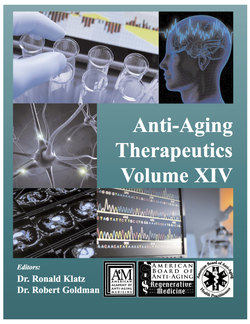Читать книгу Anti-Aging Therapeutics Volume XIV - A4M American Academy - Страница 62
Assessment of Iodine Status
ОглавлениеA population’s iodine status is evaluated by four means: urinary iodine concentration (UI), population rate of goiters, serum TSH, and serum thyroglobulin. Although UI is a good gauge of a population’s iodine status, individuals can vary greatly on their UI status on repeated samples.
An individual’s iodine status can be determined by three or more random UI readings on non-consecutive days or by 24-hour urinary iodine assessments. Alternative practitioners have used 24-hour iodine challenge tests and skin iodine absorption tests. 24-hour urinary challenge tests require the patient to ingest a one-time, high-dose of iodine orally. The premise of this test is based on the assumption that if there is a deficiency the body will “consume” the iodine and less will be measured in the urine. This testing is based on the inaccurate assumption that nearly all of the ingested iodine dose would be eliminated in 24-hours in a state of iodine sufficiency. Urinary iodine output does change as iodine intake changes, but only after many months.20
The iodine skin test was most thoroughly studied many years ago. In 1932, researchers found that 75-80% of iodine applied to the skin evaporates into the air within 24-hours.21 The remaining fraction does absorb and may have biological activity, yet the absorption is identical on live or dead skin and the rate is identical regardless of direction of application to dead skin. Therefore no mechanism is known that increases iodine absorption through the skin when there is a deficiency.22
